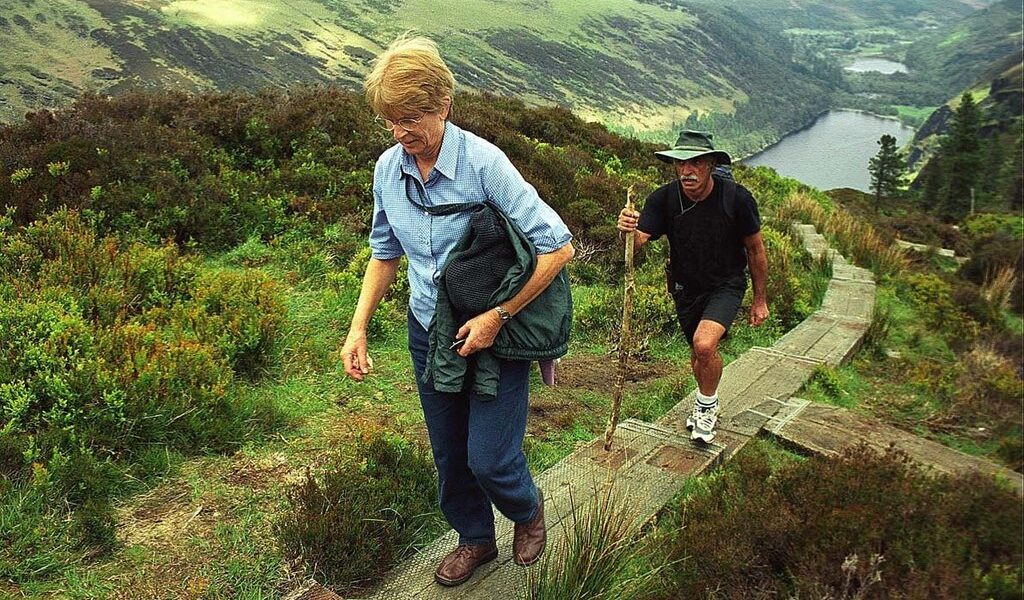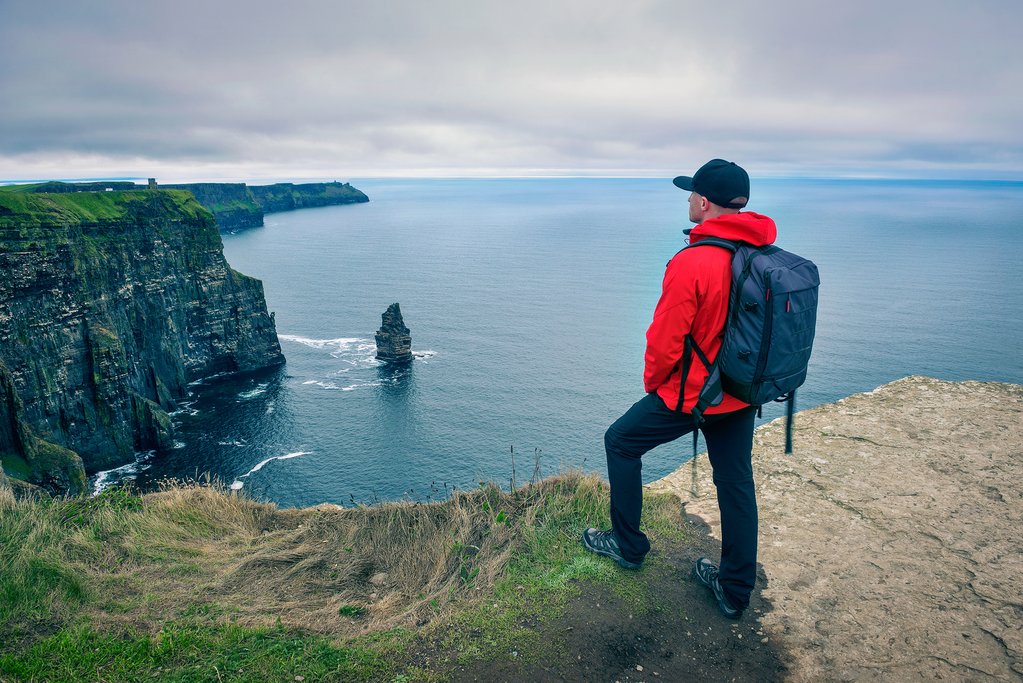
One of the best ways to experience Ireland’s remote corners is with a multi-day walk through the heather-covered hills, stretches of unspoiled coast, and sheer cliffs that the Emerald Isle is famous for. Many routes are suitable for novices, and walkers spend their evenings getting a dose of culture (and a good night’s sleep) in countryside towns and villages. Learn about the ten best multi-day walks in Ireland with this comprehensive guide.
## Exploring the Emerald Isle: A Comprehensive Guide to Multi-Day Walks in Ireland
Whether you prefer to call it hiking, trekking, rambling, going walkabout, or simply enjoying a leisurely stroll, Ireland stands out as the quintessential destination to indulge in these activities. This small island nation boasts a diverse collection of walking routes, offering adventures that typically span from three to eleven days, ensuring there’s something for every level of experience. You don’t necessarily need to be an avid hiker or seasoned outdoors enthusiast to participate; many of these trails, often affectionately referred to as “ways” by locals, are perfectly suitable for novices. Furthermore, walkers often enjoy the comfort of spending each night in charming village lodging along the way, making for a truly immersive and comfortable experience.
In this comprehensive guide, you’ll discover all the essential practical information required to meticulously plan the perfect multi-day hiking trip across the breathtaking landscapes of Ireland. We’ve also included an in-depth analysis of the best and most scenic routes, providing you with valuable insights to help you choose the ideal adventure for your preferences and fitness level. Continue reading to delve deeper and uncover a wealth of knowledge to make your Irish walking holiday unforgettable.
## Planning Your Trip: Essential Considerations for a Memorable Hiking Experience
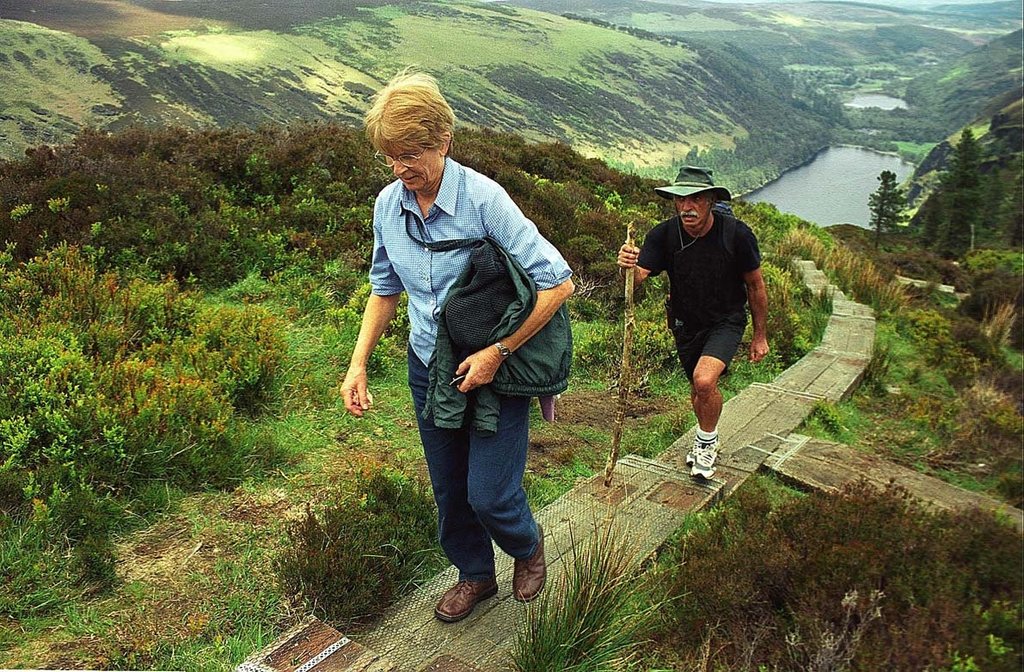
### When to Go: Navigating Ireland’s Temperamental Climate
As undeniably beautiful as Ireland is, it’s crucial to acknowledge that this nation’s climate can be notoriously temperamental and often difficult to predict with absolute certainty. However, the country generally enjoys pleasant temperatures for walking and outdoor activities throughout the year, making it a viable destination regardless of the season. If you choose to visit during the warmer months of May through August, you can expect a comfortable temperature range of the mid-50s to 60s Fahrenheit. This period is generally considered ideal for hiking, offering the most favorable weather conditions.
However, it’s important to note that the summer months also coincide with Ireland’s high tourist season. This means that you can anticipate paying higher prices for lodging and accommodations along your chosen route. To potentially avoid these inflated costs and enjoy a more relaxed experience, consider visiting during the shoulder seasons of spring and fall. These periods often offer a pleasant balance of mild weather and fewer crowds, allowing you to fully appreciate the natural beauty of Ireland without the peak-season prices.
Regardless of when you decide to embark on your Irish walking adventure, or which specific region you plan to explore, it’s highly likely that you’ll encounter some degree of wet weather. Ireland is undeniably a rainy country, and the statistics clearly reflect this. The east and southeast coasts of the island typically experience an average of around 150 days of rain per year. However, this number significantly increases as you move towards the west coast, where the average rainfall reaches as high as 225 days per year.
If you choose to come during the warmer months, you’ll naturally mitigate the chance of enduring particularly heavy or prolonged rains on your multi-day walk. However, even if you do encounter some of the famously wet Irish weather, consider it to be an integral part of the authentically Irish experience. Embrace the rain, equip yourself with the appropriate gear, and allow the misty landscapes to enhance the charm and mystique of your journey.
### Lodging and Food: Comfort and Sustenance on the Trail
Perhaps one of the most appealing aspects of undertaking multi-day walks in Ireland is the convenient fact that each stopping point is typically a charming village or small town, offering legitimate and comfortable lodging options for weary hikers. Depending on the specific route you choose, this can range from luxurious full-service hotels in larger towns like **Dingle** to more rustic, self-catering pubs, traditional inns, and cozy bed-and-breakfasts in more remote and secluded areas.
The availability of meals and supplies follows a similar pattern. Routes that boast plenty of developed stops and well-established towns, such as the **Barrow Way** and the **Causeway Coast**, will ensure that you are nicely covered in terms of access to food and essential supplies. However, if you plan on heading further off the beaten path and exploring more remote areas, it’s crucial to stock up on snacks, water, and other necessary provisions before embarking on your journey. Planning ahead and ensuring you have sufficient supplies will allow you to fully enjoy the solitude and beauty of the Irish countryside without having to worry about running out of essentials. For detailed information regarding specific routes and their respective amenities, it is recommended to consult with your travel specialist, who can provide tailored advice and recommendations to suit your individual needs.
### What to Bring: Essential Gear for a Successful Irish Hike
Only you know exactly what to bring to suit your personal hiking style and preferences. However, we highly recommend bringing certain specific items that will be particularly useful for a potentially rainy multi-day walk across the Irish landscape.
**Gear:** Investing in a good set of trekking poles or a sturdy hiking stick is generally a wise idea, as they can provide added stability and support on uneven terrain. Additionally, be sure to bring a reliable compass and a durable backpack that can withstand the elements. For these long-distance hikes, we recommend opting for a 60-liter long-distance pack or a decent-sized rucksack/daypack. You’ll need something big enough to comfortably carry your food and drink supplies, as well as any extra layers of clothing and essential rain gear. Choosing the right backpack will ensure that you can carry everything you need without unnecessary strain or discomfort.
**Clothing:** A good pair of trekking boots is absolutely mandatory for any serious multi-day hike in Ireland. Preferably, opt for leather boots that offer both support and water resistance. Cold-weather clothing is also essential, even if you’re traveling during the spring, fall, or summer months, in order to adequately guard against the possibility of sudden stormy weather. As mentioned previously, you should always plan for rain when visiting Ireland. Make sure that as much of your gear as possible is waterproof, and invest in a high-quality waterproof jacket and pants. Your waterproof clothing should also be breathable, preventing you from overheating while still providing protection from the rain. Also, ensure that the jacket has a good hood and neck collar to provide comprehensive coverage.
**Maps:** If you’re planning to travel independently and navigate the trails on your own, you can obtain detailed hiking maps from the tourism authorities in the specific county of your chosen route. Failte Ireland is the national tourism organization of Ireland, and they maintain an extensive network of tourist-information points throughout the country. These offices serve as a great resource for obtaining walking maps and other helpful information. Ordnance Survey maps (OS Explorer Maps) are another excellent resource, produced by the Irish government and offering detailed topographic information for hikers and outdoor enthusiasts.
## Exploring the Trails: An In-Depth Look at Ireland’s Best Multi-Day Walks
Now, let’s delve into the heart of the matter and explore some of the most captivating and rewarding multi-day walks that Ireland has to offer. Each of these routes presents a unique opportunity to immerse yourself in the stunning landscapes, rich history, and vibrant culture of this remarkable island nation.
## Kerry Way (133 miles/215 km) – 5 to 11 Days
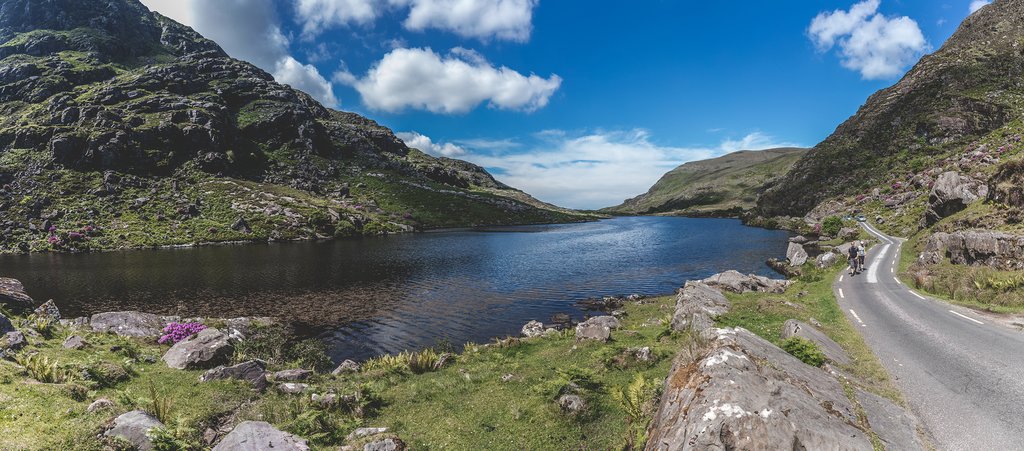
The Kerry Way stands as one of the most celebrated and sought-after multi-day hikes in Ireland, largely due to the fact that it takes place within **County Kerry**, the most popular tourist destination in the entire country. This enchanting region, situated in the southwest of Ireland, is widely regarded as the epitome of quintessential Ireland. It’s filled with incredibly breathtaking scenery, encompassing colorful old towns like **Killarney**, majestic old castles, shimmering lakes, cascading waterfalls, and, of course, the iconic rolling green hills for which Ireland is so deservedly famous.
The Kerry Way can be completed in as few as five days or as many as 11, allowing you to tailor the length of your hike according to your preferences and the amount of time you wish to spend exploring the region. Consequently, there are a variety of ways to approach hiking the Kerry Way. Most routes typically commence in the bustling town of Killarney (or the adjacent **Killarney National Park**), and follow a scenic circuit path around the stunning **Iveragh Peninsula** before ultimately returning to the starting point. The renowned eight-day Ring of Kerry circuit takes hikers on an unforgettable journey around the stunning cliffs, hidden beaches, and quaint towns of Ireland’s famed Wild Atlantic Way. It meanders westward through the postcard-perfect villages of **Caherdaniel** and **Waterville**, to the coastal white sands of **Glenbeigh** (located at the southern end of the peninsula), and then winds its way around the impressive sandstone **Mcgillycuddy Reeks** mountain range and the tranquil inland lakes before finally returning to Killarney.
## Dingle Way (111 miles/179 km) – 8 Days
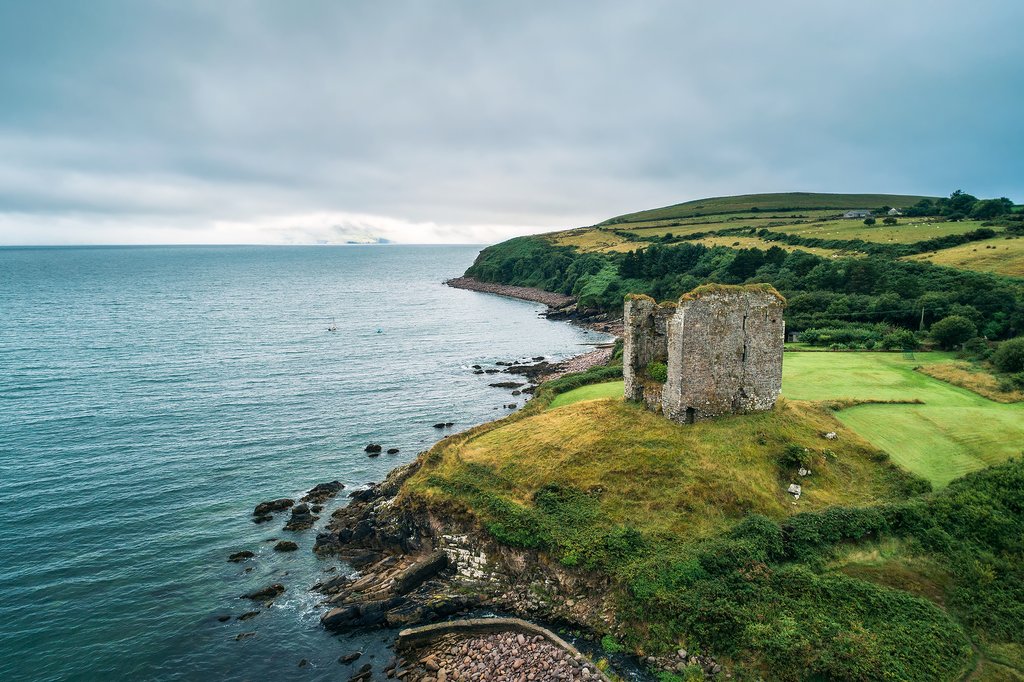
Located also in the southwest of Ireland, and situated just above the Iveragh Peninsula, sits the captivating **Dingle Peninsula**. This peninsula serves as the location for another incredibly popular long-distance walk: the Dingle Way. This route is also a circuit trek, beginning in the charming seaside enclave of **Tralee**, which is the largest town in County Kerry. For those who possess a relatively good level of physical fitness, the Dingle Way typically takes about 8-9 days to complete. During that time, you’ll be treated to an incredible amount of diversity in terms of landscapes and experiences.
Along the way, you’ll have the opportunity to cross over the shoulder of **Mt. Brandon** (at 952 meters/3,123 feet, it’s one of the highest peaks in the country), pass around the sleek foothills of **Slieve Mish**, march across pastoral farmland, and walk all the way out to the stunning beaches of **Slea Head** and the **Maharees Ayre** on the north coast of the peninsula. There are also some fascinating archeological sites scattered along the route, including ancient stone monuments featuring intricate ogham inscriptions. A particularly convenient aspect of the Dingle Way is that it’s never more than a few hours walk between villages, meaning you needn’t worry about exhausting your provisions or going without essential supplies.
## Wicklow Way (79 miles/127 km) – 8 to 10 Days
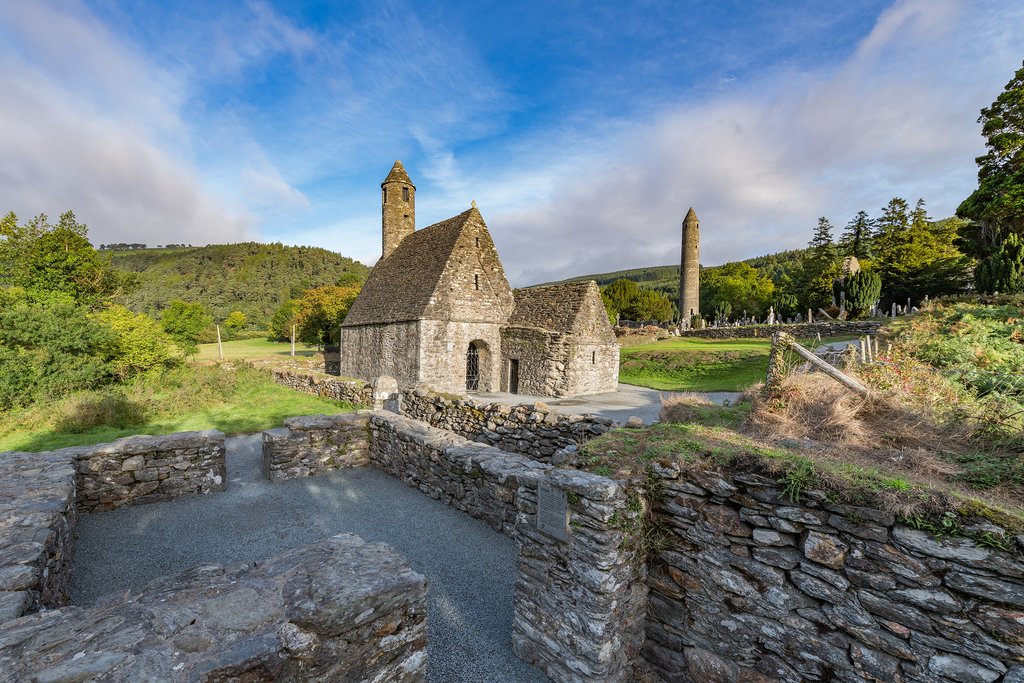
Just south of **Dublin**, you’ll discover **County Wicklow**, a region nestled amid mountainous, upland landscapes that stand in stark contrast to the flat topography of Ireland’s capital city. The Wicklow Way actually begins in Dublin’s southern suburban neighborhood of **Rathfarnham**, and then leads south-west out of the suburban parkland and over a series of mountainous trails that offer the greatest hits of Ireland’s natural beauty.
You’ll witness a lot on this impressive hike, ranging from upland mountain scenery and tranquil highland lakes to the famous rolling green hills that define Ireland’s bucolic countryside. The trail ultimately reaches its terminus in the charming village of **Clonegal**, in **County Carlow**, located south of Dublin. This hike typically takes an average of 8-to-10 days to complete. If your primary intention is to commune with nature, marvel at unspoiled natural landscapes, and enjoy a hike in relative remoteness and solitude, then The Wicklow Way is an excellent choice.
## Sheep’s Head Way (54 miles/88 km) – 4 to 7 Days
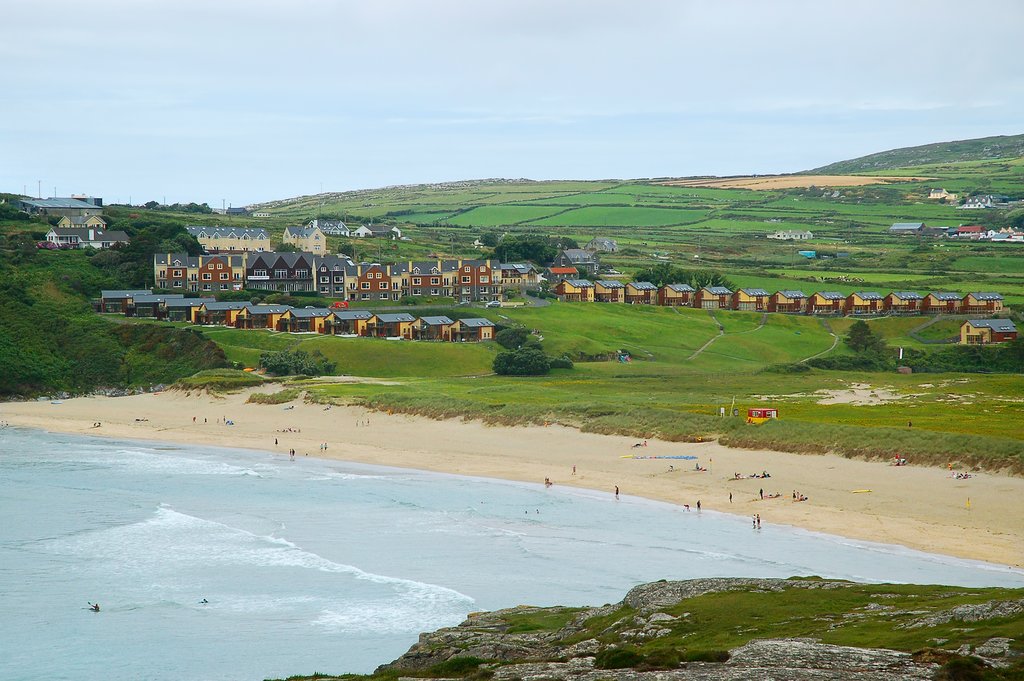
The **Sheep’s Head Peninsula**, situated at the southern tip of the southwest coast, is widely recognized as one of Ireland’s premier destinations for hiking, camping, and all things outdoorsy. This is primarily attributed to the fact that the sea views here are objectively stunning. It seems that almost anywhere you go, you’re treated to sweeping panoramas of verdant green hills and towering mountains that run straight out to the craggy cliffs of the rugged coastline. However, if you’re seeking the real prized wide-angle camera shots for your scrapbook, be sure to make a stop at the **Seefin Ridge**, which sits at 300 meters/984 feet above sea level, offering unparalleled panoramic views.
A 4-to-7-day hike along Sheep’s Head Way encompasses all of this impressive coastal majesty, as well as some noteworthy landmarks. The route commences in the town of **Bantry**, in **West County Cork**, and traces the coastline north around the peninsula before eventually returning to the starting point from the south. The scenery along the way includes coastal mountains and valleys, quaint villages like **Ahakista** and **Kilcrohane**, the standing stone pillars of an ancient monastic settlement, the remains of an old copper mine, and an iconic lighthouse perched at the very point of the peninsula. When hiking along the coast, be sure to keep a watchful eye towards the Atlantic, as you might be fortunate enough to spot dolphins and whales frolicking just offshore.
## Barrow Way (43 miles/70 km) – 4 Days
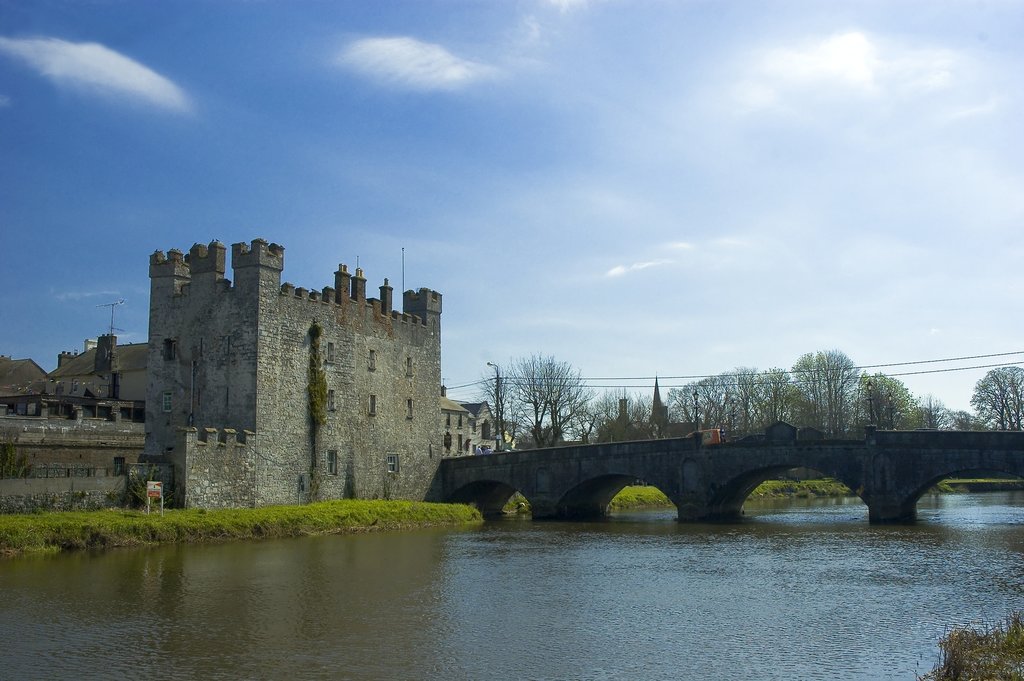
This walking route is situated in Ireland’s eastern region and follows along the scenic **Barrow River**. It traverses Ireland’s famous Ancient East, which forms the region southwest of Dublin and extending out to the Irish Sea. This historically rich area is home to 5,000 years of history, evident in the ancient sites and locales you’ll pass through along the way. In fact, the walk commences in the market village of **Athy** in **County Kildare**, which itself was settled around 150 CE, with the formal founding of the town occurring in the 12th century.
The route runs south along an old path (originally used for pulling boats and barges down the Barrow) until it reaches **Graiguenamanagh**, in **County Kilkenny**, and the ruins of the 7th-century monastery of **St. Mullins,** a site so ancient that it was once plundered by Vikings around 950 CE. The route is generally considered easy, running mostly over flatlands and passing by Ireland’s bucolic countryside, as well as medieval sites such as old stone bridges, castles, mills, lock houses, and abbeys. There are also charming villages situated at regular intervals, such as **Leighlinbridge**, making it easy to stock up on supplies. Overall, the Barrow Way offers a truly authentic taste of Old Ireland.
## Burren Way (70 miles/114 km) – 5 Days
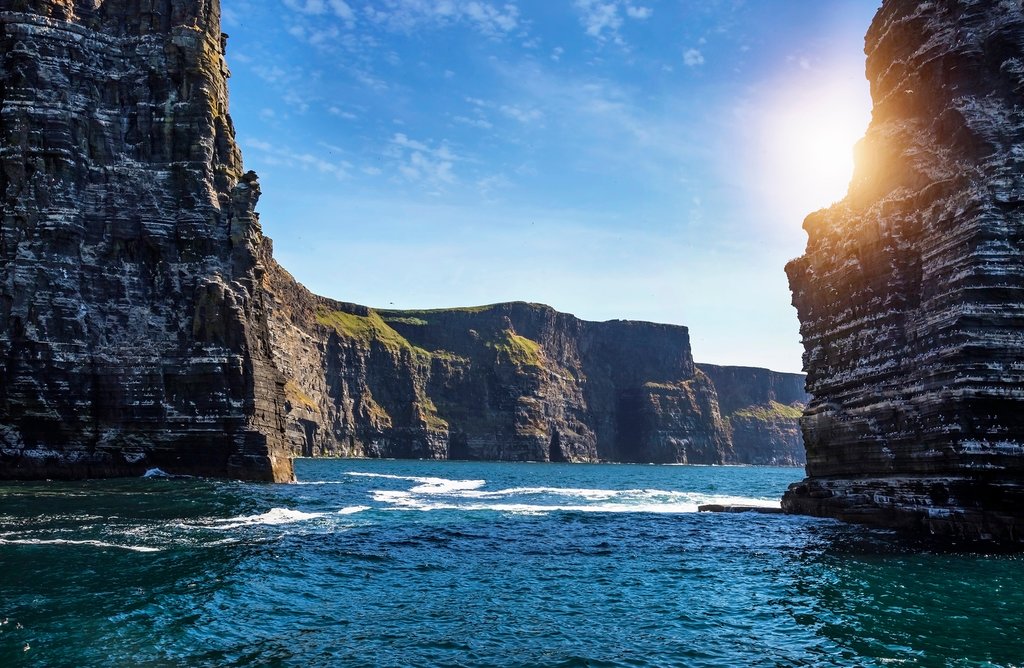
This relatively brisk multi-day hike, typically taking an average of five days to complete, runs inland from the central Atlantic coast. This region is famous for its dramatic rocky limestone cliffs that dominate the coastline, and you can be certain that this route will take you right by the famed **Cliffs of Moher** (otherwise known to cinema buffs as the Cliffs of Insanity from the feature film “The Princess Bride”).
The trail begins in the vibrant village of **Doolin** (often referred to as the gateway to the offshore Aran Islands) and the Cliffs of Moher on the west coast of **County Clare**, taking you to the charming little harbor village of **Ballyvaughan** on the north coast. The route mainly follows old tarmac roads and forest pathways and tracks, traversing the majority of the heartland of the Burren region of County Clare, and showcases vast expanses of glaciated karst (cracked limestone landscapes) filled with caves and lakes. It’s also teeming with diverse fauna, as this unique environment is home to 3/4 of all of Ireland’s plant species.
## Beara Way (196 km/122 miles) – 8 Days
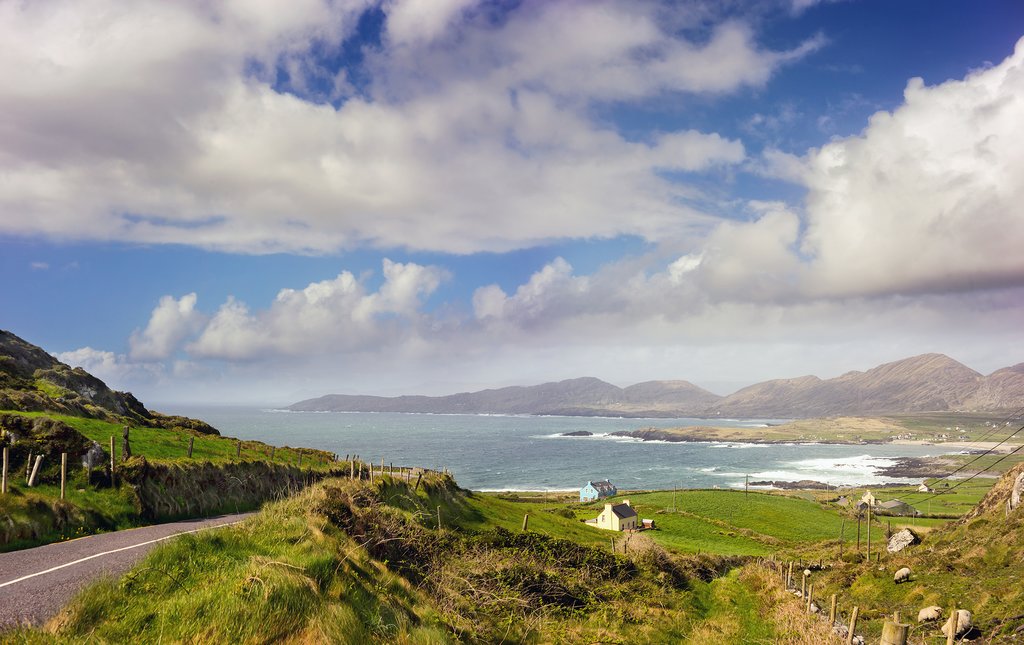
This captivating hike covers the stunning **Beara Peninsula**, situated on Ireland’s scenic southwest coast and straddling west **County Cork** and south County Kerry. The route commences and concludes in **Glengarriff**, linking the towns of **Casteltownbere** and **Kenmare**, but it also passes through a number of colorful villages along the way, such as **Allihies**, **Ardgroom**, **Adrigole**, and **Eyeries**. This generally easy to moderate hike runs along tranquil country roads and is typically completed in about eight days.
What the Beara Way is really renowned for is its abundance of historical and archeological sites. After all, this route is based partly on the historic march of O’Sullivan Beara in 1603. This legendary march recounts the journey of the Gaelic warrior prince who led his O’Sullivan clan on a perilous 500 km march north from Glengarriff, bravely crossing the Shannon River with the resolute intention of repelling the English invaders. Sadly, most of his forces perished along the way.
For hikers attempting the route today, it is (thankfully) a considerably less harrowing experience than what O’Sullivan Beara faced. The highlights include numerous historic sites, such as old castles, forts, and watchtowers. There are also fascinating tombs and ancient megalithic monuments, such as the circle of standing stones at **Uragh**. Incredible natural landscapes here include the ranges of **Caha** and **Sliah Mishkish**, low sandstone mountains that run along the spine of the peninsula.
## Causeway Coast Way (53 km/33 miles) – 3 to 7 Days
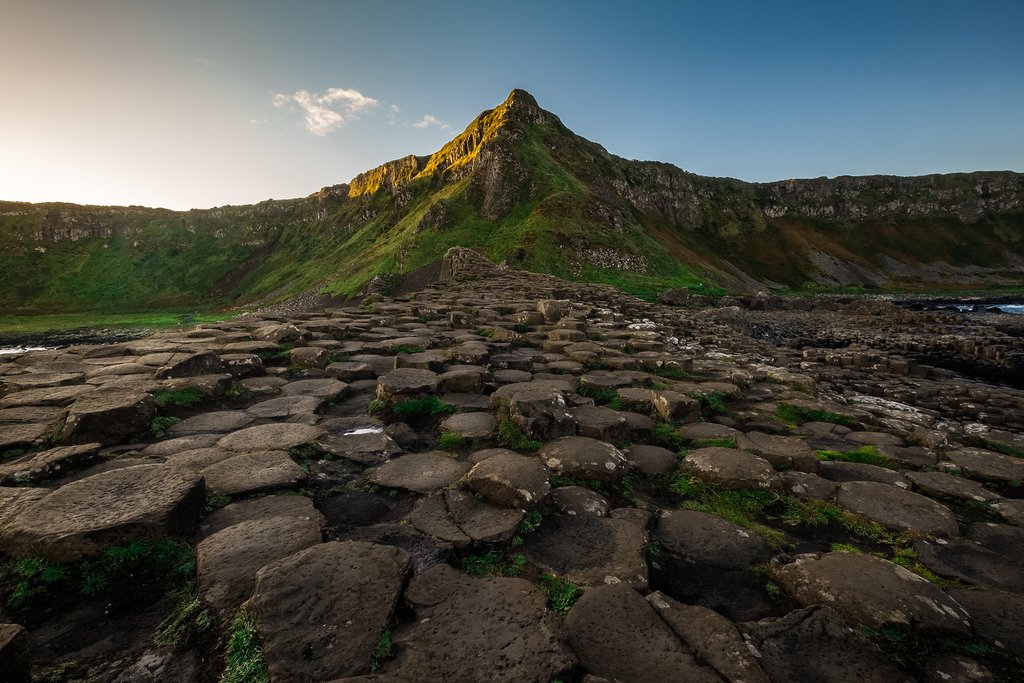
On the coast in Northern Ireland, you’ll encounter one of the most famous hikes in the country, a hike that passes along the iconic **Giant’s Causeway** in **County Antrim**. The Giant’s Causeway is a unique coastal area comprised of thousands upon thousands of interlocking basalt columns (the fascinating result of ancient volcanic fissures) that jut out of the ground, creating the impression of an ancient game of building blocks enjoyed by giants. It’s ideally suited for novice hikers, as the terrain is relatively level, and those in decent shape can typically complete the route in about three days. However, you can certainly extend it to five or even seven days in order to further savor and appreciate the singularly beautiful scenery.
The coastline in this region is impressive in its own right, as it’s home to the picturesque **Glens of Antrim**, which is a postcard-perfect region of the country filled with verdant green pastures, expansive mountain plateaus, cascading waterfalls, dramatic coastal cliffs, historic castles, secluded beaches, and unparalleled views of the sea. The Causeway Coast Way is an easy, linear trail with frequent access points that follows the coast from the charming tourist towns of **Ballycastle** and **Portstewart**, although you can opt to start and end in either one, depending on your preferences.
## Bluestack and Sli Cholmcille Way (130 km/80 miles) – 6 Days
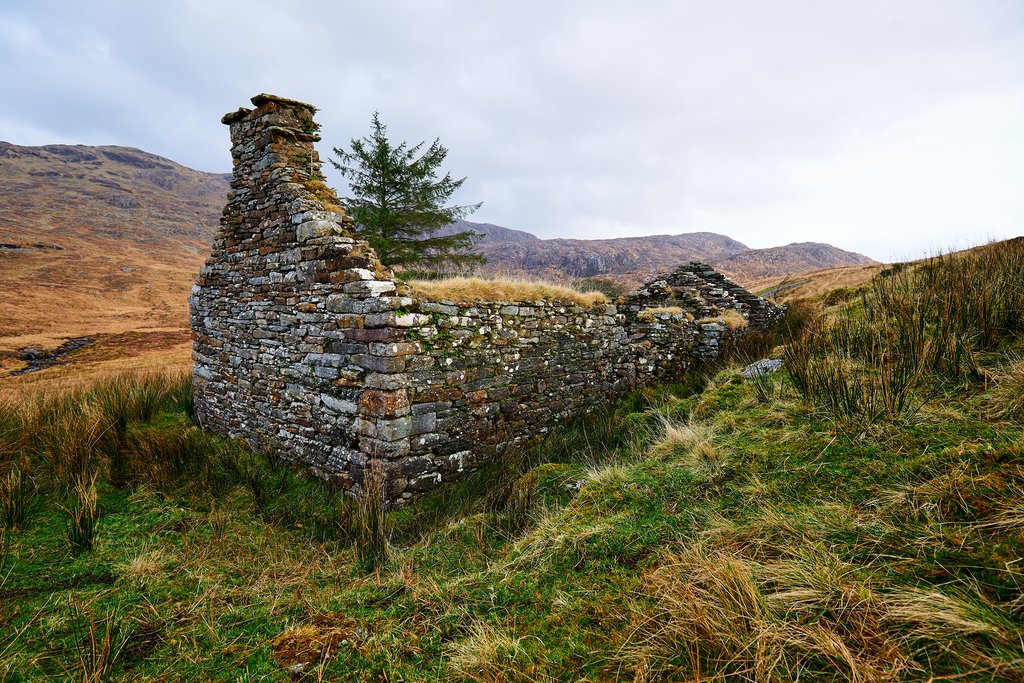
This comprehensive route follows north Ireland’s Atlantic Coast and includes the wild **Bluestack Mountains**, in **County Donegal**, and the St. Colmcille hiking route, which boasts some of the most incredible coastal views in the country. This impressive route even takes walkers to the craggy **Slieve League** sea cliffs, which at a towering 600 meters/1,968 feet, are the tallest cliffs in all of Ireland. There are also major historic sites situated along the way, such as one of Ireland’s old coastal signal towers (this particular tower is located at **Glen Head** and remains mostly intact), and the cross-pillar at the coastal district of **Glencolumbcille**, an old stone monolith featuring beautifully preserved early Christian engravings.
The Sli Cholmcille way typically takes six days to complete, and you should expect to hike long distances on each of those days. That said, it won’t be overly strenuous, as the route mostly follows tranquil country roads and easy mountain paths.
## Aran Islands (59 km/36 miles) – 5 Days
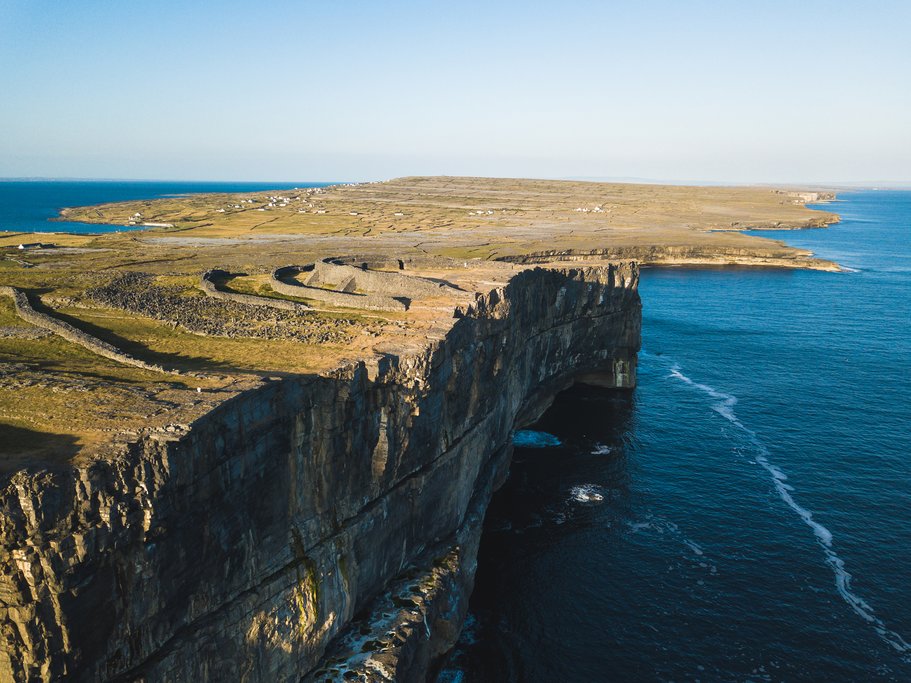
The final route on our list explores one of the most mythic and captivating places in Ireland: the Aran Islands. These three rocky outposts, located just off **Galway Bay** in southwestern Ireland, offer a fascinating throwback to the earliest age of Gaelic civilization. Indeed, Irish is still the predominant language spoken by the locals here, and surprisingly little of the modern world has encroached upon this unique and culturally rich environment. The landscapes of the Arans are denoted by verdant green rocky deserts and intimidatingly high coastal cliffs that command respect and admiration.
This five-day hike embarks from Galway, with the first two nights spent trekking around the main island of **Inishmore**. Then, it’s a transfer back to Galway and a day trip to the enchanting island of **Inishmaan** and the coastal village of Doolin, which resonates with the vibrant sounds of traditional Irish music. The end of the hike involves a walk from Doolin to the world-renowned Cliffs of Moher before ultimately returning to Galway.
B-1242

